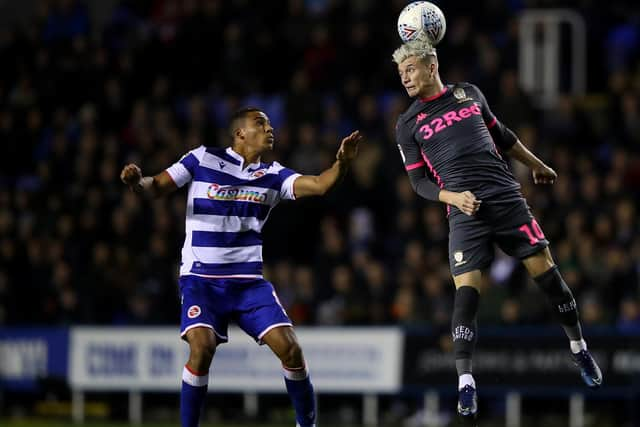Gjanni Alioski 'couldn't wait any longer' to return to Marcelo Bielsa's Leeds United side
and live on Freeview channel 276
The left-sided player, ordinarily utilised as a full-back by Marcelo Bielsa, found himself breaking down the right flank in the game’s final stages and helped set up Jack Harrison’s 87th-minute winner.
A full month had passed since Alioski last played for Leeds, in the 0-0 draw at Sheffield Wednesday, and he was delighted to end his injury-enforced exile.
Advertisement
Hide AdAdvertisement
Hide Ad“I came back from an injury, I’m always happy to be in the squad,” he said.
“It’s important to be with the lads, amazing to be together, I miss it, it’s not easy to be out.
“I was ready, I needed a little time but I couldn’t wait any longer, I wanted to go in.”
Bielsa sent Alioski out in the 66th minute at the Madejski Stadium, replacing Mateusz Klich who had been playing an advanced central midfield role.
Advertisement
Hide AdAdvertisement
Hide AdAlioski’s heat map showed him in a range of areas, but his average position was slightly to the left of centre and his biggest game-changing contribution came wide right.


He credited his team-mates and United’s detailed preparation for helping him to adapt and helping Leeds to overcome a stubborn oppositon.
“It was not easy to win; Reading played well. We had a lot of information on this team, we knew we needed pressure.
“The lads make it easy to play because it wasn’t my position but I had information how to do it. I’m mostly happy for the three points.”
Advertisement
Hide AdAdvertisement
Hide AdWhat Alioski felt was particularly key was Leeds’ ability to transition swiftly from defence to attack, regardless of who finds themselves where.
“We are dangerous on the counter attack, we change quickly from defensive to offensive and this is the work that we do. You see how many people ran in front, me, Helder, Harrison, Bamford – we know where the target is. It’s not a problem for the players to change position. We had a lot of information how to do this.”